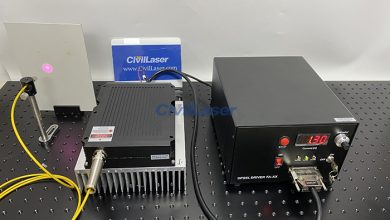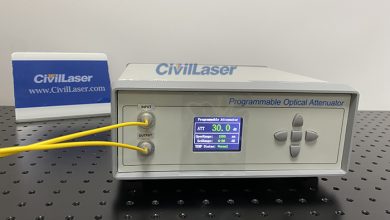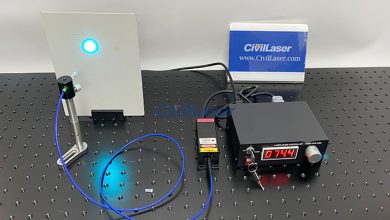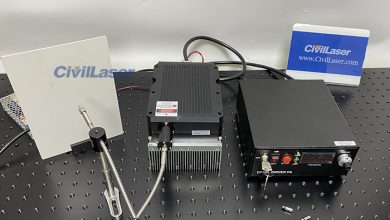Laser NewsLaser Video
1550nm Nanosecond Pulse Fiber Laser: The New Favorite for Scientific Research and Industrial Applications
What our laboratory introduces today is a 1550nm 10kW peak power nanosecond pulse fiber laser.
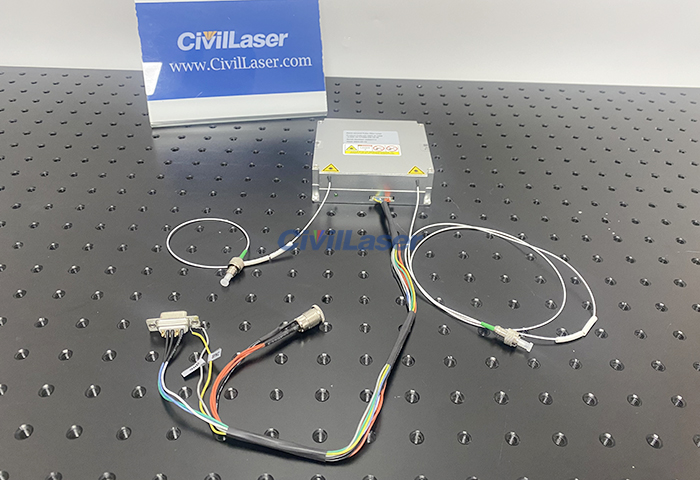
First, let’s take a look at the wavelength characteristics of the 1550nm nanosecond fiber laser. 1550nm is located in the infrared spectrum range and belongs to near-infrared light. Laser of this wavelength shows excellent transmission performance in optical communications, which can effectively reduce fiber loss and improve communication efficiency. At the same time, in the fields of medical treatment and material processing, the 1550nm laser has strong penetration and can achieve precise treatment of deep tissues and fine processing of high-hardness materials.
Nanosecond fiber laser is a laser device with extremely high time resolution. The nanosecond-level pulse width enables the laser beam to reach extremely high peak power in a very short time, thereby achieving precise and rapid processing of the target. At the same time, by adjusting the repetition frequency, continuous or intermittent laser output can be achieved to meet the needs of different applications.
This characteristic makes the 1550nm nanosecond fiber laser have broad application prospects in scientific research, precision processing and rapid measurement.
This nanosecond laser module uses an external signal source, and customers can also customize the built-in signal source. The Peak power is 10kW, the average power is 2W. And the single pulse energy is 100uJ.
The test report of this 1550nm nanosecond pulse fiber laser module.
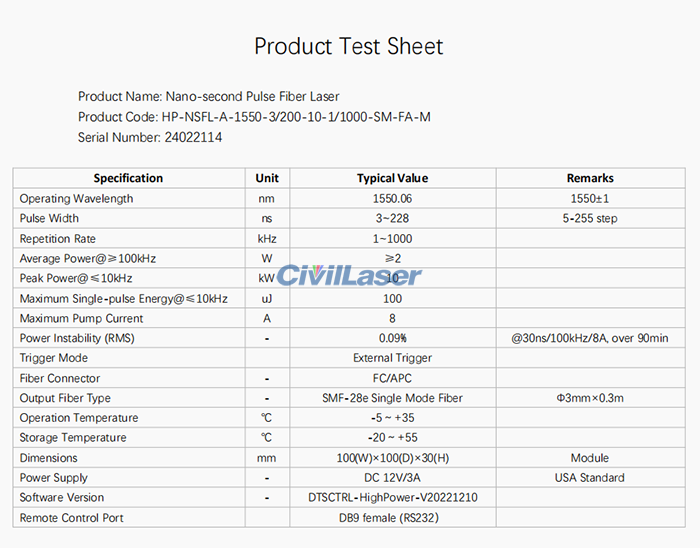
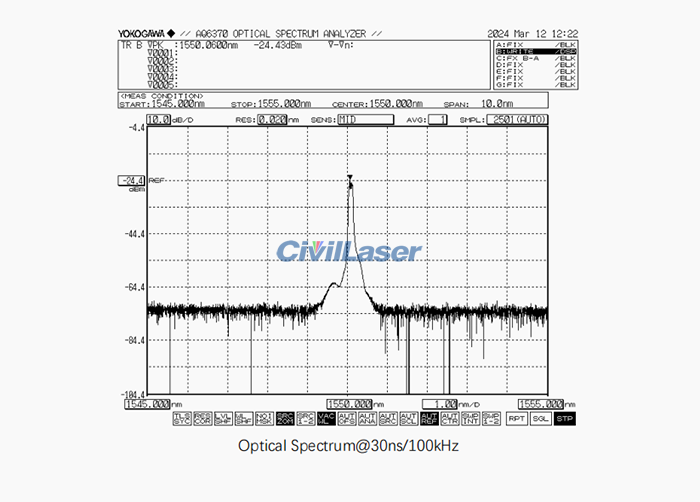
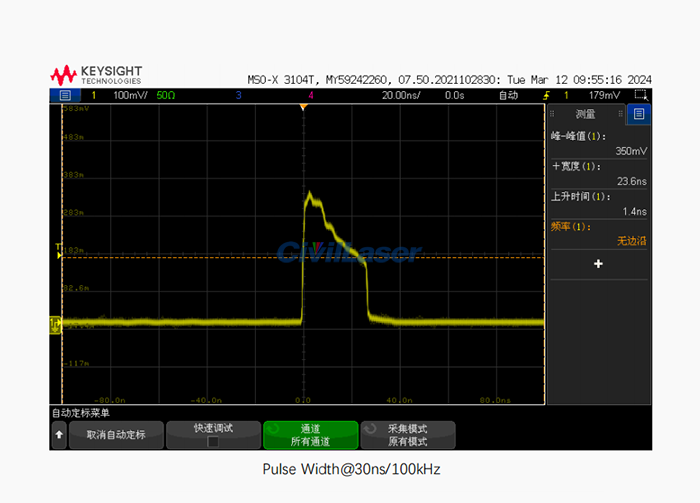
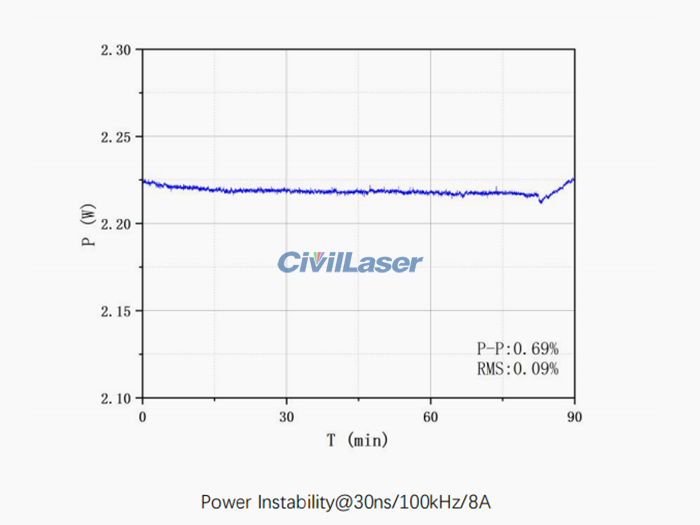
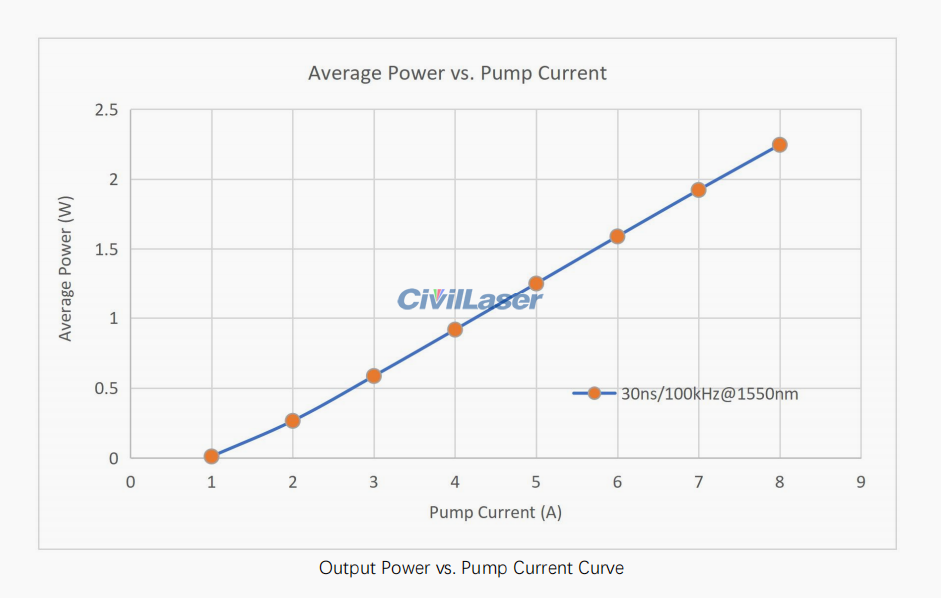
In general, the 1550nm nanosecond fiber laser has shown broad application prospects in many fields with its unique wavelength characteristics and excellent performance. With the continuous advancement of science and technology and the growing demand for applications, we have reason to believe that 1550nm nanosecond fiber lasers will play a more important role in the future and bring more breakthroughs and innovations to scientific research and industrial applications.
